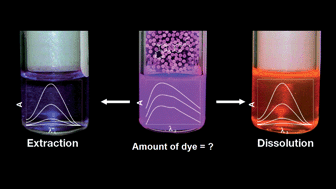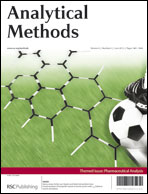One of the most active research areas in the life and material sciences is the design and synthesis of fluorescent nano- and micrometre sized particles for applications e.g. as labels, sensor systems, and platforms for fluorescence assays or barcoding materials. The reliable and reproducible fabrication of such particles as well as many applications require accurate, simple, and versatile procedures for the determination of the dye content per particle which affects e.g. the brightness of these materials and their surface charge and thus, colloidal stability. Here, four fast and inexpensive spectroscopic methods for the quantification of the fluorophore content of beads are presented and compared for nanometre- and micrometre sized polystyrene particles loaded or labeled with commercial fluorophores, differing in dye class, charge, and hydrophilicity. This included the determination of the amount of incorporated dye from absorption spectra of bead suspensions, via dissolving of the polymer matrix, via extraction of the polymer matrix, and from the supernatant of the swelling solution or reaction mixture. Method validation was performed with a sulfur-containing dye and elemental analysis. Based upon this method comparison and the accomplishable uncertainties, two reliable strategies for particle characterization and bead process control are identified that can be easily extended to other materials.

You have access to this article
 Please wait while we load your content...
Something went wrong. Try again?
Please wait while we load your content...
Something went wrong. Try again?


 Please wait while we load your content...
Please wait while we load your content...